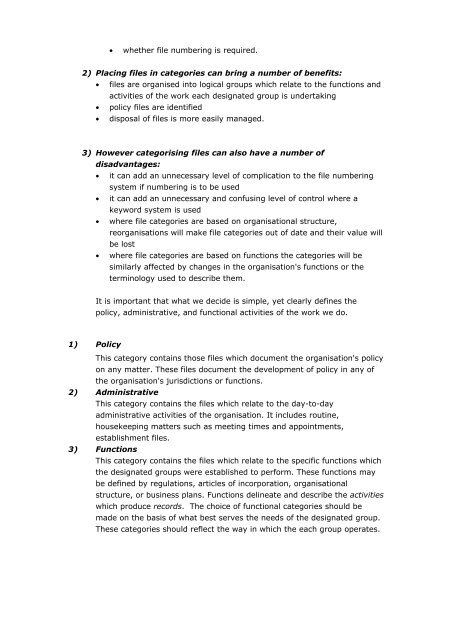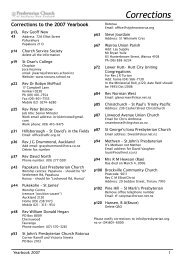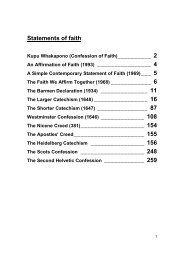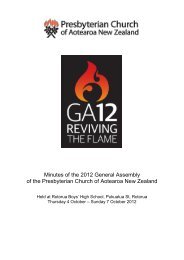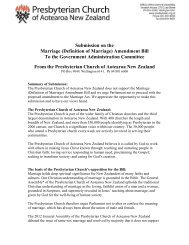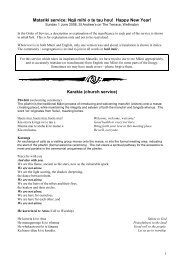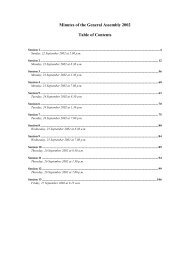Records and Archives Management for Presbyteries - Presbyterian ...
Records and Archives Management for Presbyteries - Presbyterian ...
Records and Archives Management for Presbyteries - Presbyterian ...
Create successful ePaper yourself
Turn your PDF publications into a flip-book with our unique Google optimized e-Paper software.
• whether file numbering is required.<br />
2) Placing files in categories can bring a number of benefits:<br />
• files are organised into logical groups which relate to the functions <strong>and</strong><br />
activities of the work each designated group is undertaking<br />
• policy files are identified<br />
• disposal of files is more easily managed.<br />
3) However categorising files can also have a number of<br />
disadvantages:<br />
• it can add an unnecessary level of complication to the file numbering<br />
system if numbering is to be used<br />
• it can add an unnecessary <strong>and</strong> confusing level of control where a<br />
keyword system is used<br />
• where file categories are based on organisational structure,<br />
reorganisations will make file categories out of date <strong>and</strong> their value will<br />
be lost<br />
• where file categories are based on functions the categories will be<br />
similarly affected by changes in the organisation's functions or the<br />
terminology used to describe them.<br />
It is important that what we decide is simple, yet clearly defines the<br />
policy, administrative, <strong>and</strong> functional activities of the work we do.<br />
1) Policy<br />
This category contains those files which document the organisation's policy<br />
on any matter. These files document the development of policy in any of<br />
the organisation's jurisdictions or functions.<br />
2) Administrative<br />
This category contains the files which relate to the day-to-day<br />
administrative activities of the organisation. It includes routine,<br />
housekeeping matters such as meeting times <strong>and</strong> appointments,<br />
establishment files.<br />
3) Functions<br />
This category contains the files which relate to the specific functions which<br />
the designated groups were established to per<strong>for</strong>m. These functions may<br />
be defined by regulations, articles of incorporation, organisational<br />
structure, or business plans. Functions delineate <strong>and</strong> describe the activities<br />
which produce records. The choice of functional categories should be<br />
made on the basis of what best serves the needs of the designated group.<br />
These categories should reflect the way in which the each group operates.


